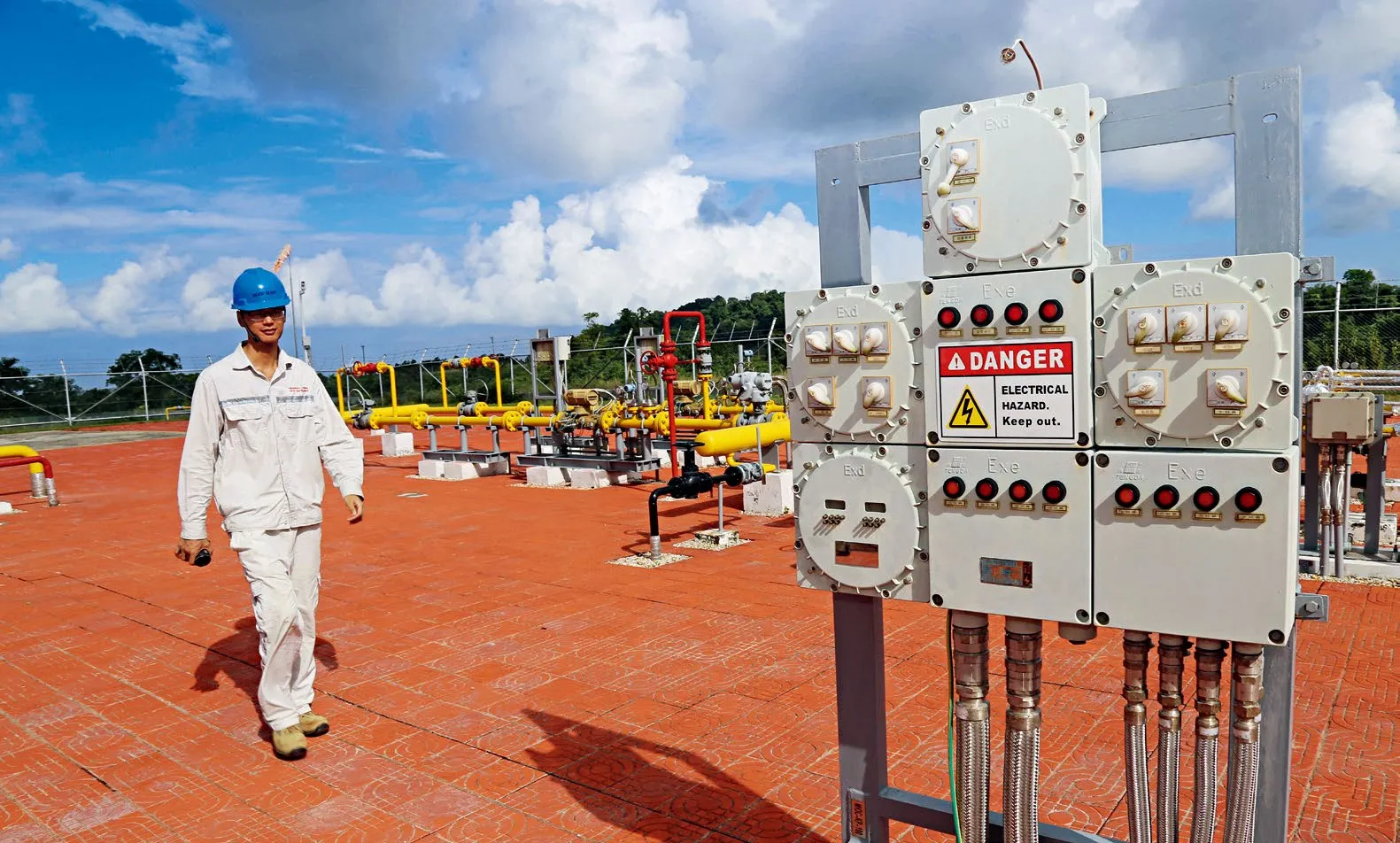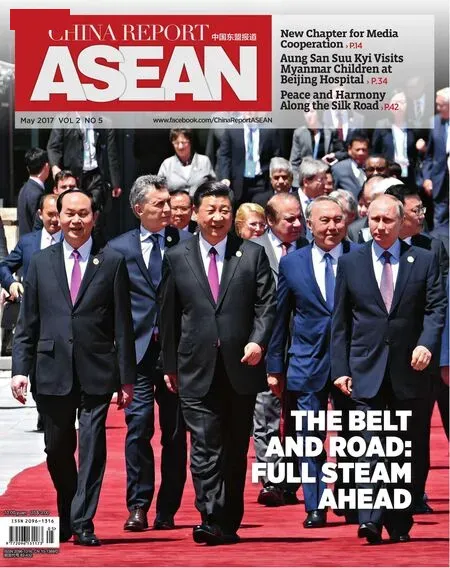Belt and Road Initiative Drives Myanmar’s Development
Belt and Road Initiative Drives Myanmar’s Development
By U Nyunt Maung Shein
China's expertise and investment can help Myanmar's economy take off

About the author:U Nyunt Maung Shein is the Chairman of the Myanmar Institute of Strategic and International Studies (MISIS).
On May 14, 2017, the international community again focused on Beijing. Having successfully hosted the 2008 Summer Olympic Games and the 2014 APEC Summit, China’s ancient capital city hosted yet another historic event — The Belt and Road Forum for International Cooperation.
Close Friends
China and Myanmar are geographically close neighbors with a long history of friendship dating back to ancient times. The official dialogue partnership between the two can be traced back to the founding of New China in 1949, shortly after Myanmar gained its independence in 1948. Then-Chinese Premier Zhou Enlai visited Myanmar nine times and attended official functions wearing Myanmar’s traditional formal attire on three separate occasions, a rarity in diplomatic history. With the joint efforts of Premier Zhou Enlai and Myanmar Prime Minister U Nu, the relations between the two countries became close, allowing the two countries to tackle disagreements quickly and efficiently.
The Myanmar osmanthus trees that the leaders of the two countries planted in Yunnan Province 60 years ago, as symbols of Sino-Myanmar friendship, are now in full blossom.
Myanmar’s former president U Thein Sein visited China four times during his tenure. State Counsellor Aung San Suu Kyi has visited China twice. President U Htin Kyaw concluded a visit to China several weeks ago. In the meantime, Myanmar has invited Chinese state leaders to visit their country to consolidate the foundation of Myanmar-China friendship, as well as tackle the misperception and rumors among various Western media sources that Myanmar-China relations have declined.
Myanmar and China are friendly neighbors. China is Myanmar’s largest investor and trading partner. On just the sixth day after the National League for Democracy (NLD) government took office, Chinese Foreign Minister Wang Yi became the very first foreign minister to visit the country under its new government. Aung San Suu Kyi visited China before a visit to the United States.
Since Myanmar’s reform and opening up process began, the government has relaxed its supervision of the media. That’s why people in Myanmar have read some Western media articles with prejudice against China, resulting in a misunderstanding of China. In the Myanmar-China border area, a number of businessmen engaged in illegal logging and smuggling, which has been jointly suppressed by both governments. Some Western media have made exaggerated reports, which have negatively influenced Myanmar-China relations.
My first visit to China was in 1983, on a trip to Beijing to discuss the markers on the Myanmar-China border. My most recent visit was in November 2016 for an exchange program with scholars from the Chinese Academy of Sciences. I also visited Xi’an, where the ancient Silk Road began, as well as Shanghai, Guiyang and several other cities. I have high hopes for Myanmar-China relations. Apart from exchanges between the two governments, I hope that there will be more exchanges between the parties, think tanks, media and non-governmental organizations of the two sides to enhance our mutual understanding. Chinese Ambassador to Myanmar Hong Liang is working positively toward that end. Frictions in the process of exchange can be properly resolved with mutual respect and mutual understanding.
Window of Opportunity
The Belt and Road, a great initiative proposed by China, has connected Asia-Pacific with the Middle East, Europe and Africa. Myanmar is in a unique strategic position. Its participation in the Belt and Road will strengthen its cooperation with other countries, providing it with opportunities of development in trade, investment and infrastructure construction. Although Myanmar was historically not a part of the ancient Silk Road, it can serve as a modern-day transit link between China and the Indian Ocean. It takes cargo vessels 18 days to travel fromthe Indian Ocean to China. Should Myanmar be the transit hub between the two, considerable resources and time could be saved. The Myanmar-China gas pipeline, which was officially launched recently, will bring significant benefit to both sides.
The establishment of Myanmar’s Kyaukpyu Special Economic Zone proves that Myanmar-China cooperation can not only upgrade bilateral political, economic and trade relations, but also contribute more to the economic development of the country and provide more job opportunities. In building the BCIM (Bangladesh, China, India and Myanmar) Economic Corridor, a major obstacle in the development of trade among China, India and Myanmar is the instability on the Myanmar-China and Myanmar-India borders. Only when the borders are peaceful can personnel and materials be transported securely. That’s why the NLD government’s primary task is to achieve national stability, a precondition for economic development.
Recently, the Second 21st Century Panglong Ethnic Conference took place, and participants included the military and armed ethnic groups. We look forward to the timely reconciliation between the government and the armed ethnic groups in Kokang and Wa State. Only with reconciliation can we achieve national peace and stability. I know that China also expects stability on the China-Myanmar border. Only in an environment of peace and stability can we achieve common prosperity.
Myanmar is now at the stage of development, accelerating reform and opening up. We need international support in many areas. The main issue is electricity. If this problem could be resolved with the assistance of another country, Myanmar would be able to focus on developing its industry. The second issue is infrastructure. Myanmar’s infrastructure is relatively backward, constraining efforts to improve people’s lives and economic development. The third issue is the training of specialists in different fields, so that advanced knowledge and technology in various fields can be spread and shared. The fourth issue is the need for improvement of the poor highway and railway transportation which is hindering our economic growth.
As a scholar, I am very optimistic about the Belt and Road. It is an innovative move made by China in its efforts to participate in international economic cooperation, which has promoted its economic and trade cooperation with the countries and regions along the route. It is open, with no restrictions on other countries or international organizations. Chinese commodities can be sold to other countries. Similarly, commodities of other countries can be sold to China. That has promoted economic and trade links on the one hand, and communication among cultures on the other. In the three years since it was first proposed, many fine projects have been implemented. I think the Initiative has been a great success.

On Nov. 9, 2016, an engineer monitors the equipment at the gas pipeline station in Kyaukpyu, Myanmar, where the China-Myanmar gas pipeline begins before stretching all the way northeast to China.
In recent years, ASEAN member states have actively carried out multi-faceted diplomacy, playing an increasingly important role in regional and international affairs. The building of the 21st Century Maritime Silk Road will promote the economic development of both China and ASEAN. In addition, the Maritime Silk Road will be able to help with the further development of ASEAN’s interconnectivity and overall planning. It will also strengthen the peopleto-people bonds among them. Within the framework of the Belt and Road, cooperation in various areas between China and ASEAN, including Myanmar, is expected to be further strengthened.

